Application Prospect of Nanotechnology in Animal Husbandry
In 1958, Richard Feyman, winner of the Nobel Prize in physics, predicted: "I don't doubt that if we give some control over the arrangement of objects on a tiny scale, we can make objects get a lot of possible characteristics." Studies have confirmed that when small particles enter the nanometer range (1-100 nm), they themselves have a quantum size effect. Small size effects, surface effects, and quantum tunneling have led to many novel features of nanosystems. The large specific surface area of ​​the nanometer system makes the bond state seriously mismatched, many active centers appear, the surface steps and roughness increase, and the chemical valences of non-chemical equilibrium and non-integer coordination occur on the surface, resulting in specific changes in the chemical properties of the nanosystem. Nanoparticles exhibit many unique properties compared to more microscopic atoms, molecules or macroscopic powders, blocks. In the 1990s, nanoscience became a research hotspot that swept the world. Nanoscience brought new opportunities for the study of physics, chemistry, materials science, biology, medicine, and other disciplines, and provided new opportunities for the development of interdisciplinarity. Ideas. The so-called nanotechnology refers to a comprehensive technical system for the preparation, research and industrialization of substances at the nanoscale. At present, there are few reports on nanotechnology in animal husbandry, but nanotechnology as a new technology will definitely bring new starting point to animal husbandry.
1 Genetic breeding
1.1 Animal Variety Improvement
Over the years, with the continuous development of biotechnology, transgenic technology has been greatly developed. Transgenic technology can transform the animal's genome, which can improve the economic traits of livestock and poultry more effectively, such as increasing the growth rate, increasing the lean meat percentage, improving the meat quality, improving the feed utilization rate, strengthening the resistance to diseases, etc.; Rapid breeding of excellent breeding stocks, in a short time to develop new varieties. However, compared with nanotechnology, the latter has a more obvious advantage in cultivating new varieties. According to reports, a medical company produced transgenic animals using microinjection technology (a type of transgenic technology) from 1989 to 1997, and an average of 51.4 animals obtained a transgenic offspring. If nanotechnology is used to first decompose DNA completely into single genes and then assemble them according to need, the success rate of transgene integration can reach almost 100%. At the same time, using nanotechnology, as long as manipulating a few amino acids on the DNA chain or even changing the arrangement of several atoms, it is possible to cultivate species with new traits or even new ones. At present, researchers from the Shanghai Institute of Nuclear Research, the Shanghai Institute of Nuclear Research, Shanghai Jiaotong University and Hu Min and Li Minqian work together with scientists from Shale University in Germany to perform nanoscale "separation surgery" on individual DNA using nano-microscopy such as AFM. Firstly, the entangled DNA molecular chain is completely straightened, cross-laid into a grid-like two-dimensional network, and then the interaction between atoms is used to cut, bend, and trim the molecular chain, finally “writing†each The three-letter “DNA†with a length of only 300 nm and a width of 200 nm demonstrates the tremendous progress made by humans in the nano-imaging and manipulation of biological macromolecules. The results of this research show that humans can allow a single DNA molecule chain to exhibit its fine structure and manipulate it to achieve molecular structure modification to form nanostructures or graphics, enabling humans to explore the mysteries of life in a smaller world and at a deeper level. For example, rapid and accurate detection of gene mutations can increase the speed and accuracy of search for mutation sites in pathogenic genes; molecular-level surgery can be used to modify genes.
1.2 Quality Improvement of Feed Crops
The development of quality and efficient feed resources is always the primary issue in the development of livestock production. The development and application of plant breeding, especially genetic markers and transfer technology, will bring more high-yield, superior-yield or special-purpose crop varieties and feed additives to the feed industry and aquaculture. Nutritionists use genetically modified crops to achieve the following objectives: (1) increase the quantity and quality of crop protein; (2) increase the oil content of seeds; (3) cultivate low-toxic feed; (4) breed feed crops containing specific nutrients. The current method of genetic breeding uses restriction enzymes to excise the desired gene fragments and connect them to the DNA of the breeding forage crops. Since the junction between the gene fragment and the DNA is usually random, the chances of success are different for each test. Similarly, the use of nanotechnology to decompose DNA into individual genes and then assemble them as required will result in a success rate of 100%.
2 feed development
In general, ultra-fine products such as ultra-fine crushing and other high-tech means are used to crush the feed material particles into nanometer-scale ultrafine products. It has a large specific surface area and porosity, and therefore has a strong adsorption and high activity. After such feed is ingested, the area of ​​contact with digestive enzymes is tens of thousands of times larger than current feed, and it is easier to be digested and absorbed, which greatly reduces the feed-to-meat ratio and material-to-egg ratio, and lowers the production cost. At the same time, the antinutritional factors in the feed will undergo qualitative changes at the nano level, which will require the re-measurement of feed ingredients and nutrient standards and the recalculation of the feed formulation, resulting in a feed production revolution.
2.1 feed ingredients
2.1.1 Vegetative feed ingredients Pollen (sporules), stems, leaves and fruits of plants can be nano-pulverized to develop a series of products with broad prospects.
Plant pollen is the plant's male germ cells and its nutrition is very comprehensive. In foreign countries, it is hailed as “the only complete nutrition and health care product discovered so far in the world†and “a treasure house of miniature nutritionâ€, which has a very good health care effect on humans and animals. Such as black locust pollen, pine pollen, hawthorn pollen and so on. Similarly, the plant spore powder also concentrates all the essences of the plant. For example, Ganoderma lucidum spore powder is rich in various functional ingredients such as ganoderma lucidum polysaccharides, organic germanium, peptides, triterpenes, and sterols, which can enhance the immune level of cells and thus improve animals. Your own immunity. However, regardless of plant pollen or spore powder, its monomers have a hard outer shell, and direct consumption is excreted due to inability to absorb, which affects the development and utilization of such raw materials. Nanotechnology is introduced to fully pulverize and break plant pollen or spore powder so that the active ingredients can be fully released. The resulting feed can give full play to the value of raw materials and can be completely absorbed and utilized by animals.
Plant leaves such as tea contain a large amount of organic matter such as proteins, amino acids and vitamins, and inorganic mineral elements that are required for dozens of animals. However, traditional boiling water brewing methods cannot extract all the nutrients of tea from the body for absorption. Some insoluble or insoluble ingredients, such as vitamins A, K, E, and most proteins, carbohydrates, and some minerals, remain. In tea dregs. If nano-technology is used to add food-grade tea waste to use, the tea is crushed to make nano-sized tea powder, and most of the nutrients can be directly absorbed and utilized by the animal. According to reports in Japan, in the process of breeding pigs, adding appropriate amounts of green tea powder can increase the nucleic acid content of “tea pig†meat by 20%, and reduce the cholesterol content by 10%. Feeding tea at the end of the tea also increases pig disease resistance and shortens fattening time (about 100 days from weaning to slaughter), and has low cost and no side effects.
2.1.2 Food by-products such as wheat bran, rice bran, and bean cake have been found to have relatively high nutritional value, but due to the influence of factors such as cellulose and anti-nutritional factors, they cannot be used in large quantities by animals. If processed into nano-scale products, its social and economic benefits are considerable.
Nanotechnology can also smash cellulose into single glucose and cellobiose, making the rich organic matter on earth a nutrient substance and chemical raw material that humans and livestock can use.
2.2 Trace Element Additives
The additive forms of trace element additives are inorganic in the first generation, organic in the second generation, amino acid complexes in the third generation, and trace elements in the fourth generation will be nano-and micro-elements. The utilization of inorganic trace elements is low, about 30%, while the utilization of nano-trace elements can reach almost 100%. This is certain that nano-and micro-elements can be directly infiltrated without ion exchange, thereby greatly increasing the speed and utilization of absorption. For example, selenium is an essential trace element in animals and is an active center component of enzymes such as glutathione peroxidase. One of the salient features of selenium is its narrow range of nutrient and toxic doses. Therefore, the development and utilization of low-toxicity and high-efficiency selenium products have attracted worldwide attention. Compared with inorganic selenium, organic selenium has higher absorption and utilization value, and has less acute toxicity. It is considered to be a better selenium product. Organic selenium has gradually replaced inorganic selenium and has been widely used. However, the low toxicity and high-efficiency characteristics of organic selenium are not as strong as those of inorganic selenium, and even the subchronic toxicity doses of the two are very close. The results show that compared with other forms of selenium, nano-selenium has a strong advantage of low toxicity and high efficiency. The study on the protection of mouse immune system by nano-selenium has achieved satisfactory results. In terms of acute toxicity (LD50), inorganic selenium was 15 mg/kg, organic selenium was 30-40 mg/kg, and nanoselenium was 113 mg/kg. In terms of sub-chronic toxicity, when the content of inorganic selenium or organic selenium in feed is between 4 and 5 mg/kg, weight loss and liver cirrhosis can be caused in rats; if it is nano-selenium, selenium content at 6 mg/kg does not occur. The above phenomenon. This shows that nano-selenium compared with organic selenium or inorganic selenium significantly reduced toxicity.
2.3 Veterinary drugs
After the use of nanotechnology in veterinary drugs, the efficacy can be greatly improved, which greatly reduces the use of doses and can solve drug residue problems without changing the drug. The drug nanocarriers have the advantages of high targeting, controlled release of drugs, improvement of the dissolution rate and absorption rate of insoluble drugs, etc., and can improve drug efficacy and reduce toxic and side effects. For example, nano-zinc oxide is a new product for the 21st century. It is an excellent zinc oxide product in the feed industry and has unparalleled properties of general zinc oxide. Because the nano-zinc oxide has a strong chemical activity, it can react with a variety of organic substances (including organic substances in bacteria), thus killing most pathogens and viruses. The relevant quantitative tests showed that when the concentration of nano-zinc oxide was 1% within 5 minutes, the sterilization rate of Staphylococcus aureus was 98.86%, and the E. coli sterilization rate was 99.93%. Studies have shown that the addition of nano-zinc oxide in feed has a significant increase in efficacy compared to general zinc oxide, and has a high absorption rate and a small dose.
3 epidemic prevention diagnosis
For a period of time, whether people are turning on the television or turning around the newspapers, it seems that all the media have mentioned these nouns more or less - "foot-and-mouth disease" and "bird flu". Foot-and-mouth disease is a zoonotic infectious disease. Since the bird flu epidemic broke out in Hong Kong in 1997 and caused deaths from human infections, it has been listed as a serious disease that seriously endangers chicken husbandry and affects human health. With regard to livestock and poultry infectious diseases with particularly serious threats such as bird flu and foot-and-mouth disease, the state's "863" program has invested a lot of funds to focus on the development of a new type of genetically engineered vaccine that is safe and expensive. Microchips made with nanotechnology that carry a variety of vaccines and can be precisely released can prevent the occurrence of various infectious diseases as soon as they are implanted in animals at one time. This will not only avoid the loss of stress caused by the current multiple immunizations, but also greatly improve the immune effect and completely change the current immunization procedures. Therefore, the adoption of nanotechnology can well solve the problem of bird flu and foot-and-mouth disease that has been plaguing us for so long.
4 Livestock and poultry product quality
The use of nano-technology drugs, due to greatly improve drug efficacy and reduce the amount of drugs, so you can solve the problem of livestock and poultry products, drug residues, improve the quality of livestock and poultry products. Packaging nano-micro-films for poultry eggs and packaging the livestock and poultry meat with antimicrobial nano-plastic bags can greatly extend the shelf life of products. This technology has been applied in some places.
5 Environmental Protection
Due to the application of nanotechnology, the digestive utilization rate of feed is greatly increased, the excretion of feces is reduced, and the amount of nitrogen and phosphorus discharged is reduced, thereby reducing nitrogen, phosphorus and toxic and harmful elements in feces to soil, water, air, etc. Pollution. With the quiet rise of nanotechnology, nano-environmental protection will quickly come. Nanotechnology will play an important role in the future green revolution, bringing breakthrough changes to the environment.
The above is the author's demonstration of the application of nanotechnology in animal husbandry. For now, China's nanotechnology is still in the research and development stage, and there is still a considerable distance from the overall industrialization. As academician Bai Chunli, the deputy director of the Chinese Academy of Sciences and the chief scientist of nano research in China, said: “While nanotechnology has stepped into the lives of ordinary people, nanotechnology must have the same extensive and profound impact as information technology. It will be twenty or thirty. Things after the year.†In short, nanomaterials are another milestone in human history. With the advent of nanotechnology, in the next 30 years, human civilization will undergo far more changes than the entire 20th century. Nanotechnology enables traditional animal husbandry products to “change their appearanceâ€, and adding nanomaterials to traditional livestock products can improve or acquire a range of functions. This improvement is not necessarily expensive, but it makes products more Market Competitiveness. The use of nanotechnology will create a variety of new materials with "exclusive functions" that will lead to major changes in the livestock industry. Nanotechnology will lead the 21st century livestock revolution.
Mobile Type Halogen Operating Light
Halogen reflective Mobile Type Operating Light is widely used in various operation lighting occasions in hospital and clinics.
Full close streamline lamp-body design of the Halogen Shadowless Lamp completely meets the demand of the sterilization and high standard of laminar flow purification in operation room.
Adopting more than 5280 slices of reflection mirror, guaranteeing 1200 mm lighting depth.
Lighting color of the Halogen Surgery Light is close to natural sunlight and helps the doctor to operate surger clearly and accurately.
The back-up bulb will start work within 0.2 seconds automatically in case the main battery is dead, ensuring the continuation of surgical operation. There's failure indication in the handle control panel to recommend the bulb to be changed after operation.
The detachable handle jacket can be used for high temperature (≤134℃) sterilized.
Digital-control circuit offers many functions:10 segment brightness selection, stepless lighting regulation, brightness memory, low voltage start-up and power on self test etc.
Life-span of OSRAM halogen bulb is up to 1500 hours. The bulbs can be changed easily.
High thermostability Germany ORSAM lamp socket.
Balance arm can be optional Germany imported or domestic.
Mould Die-casting Eight edge type Revolving arm.
Product Images:
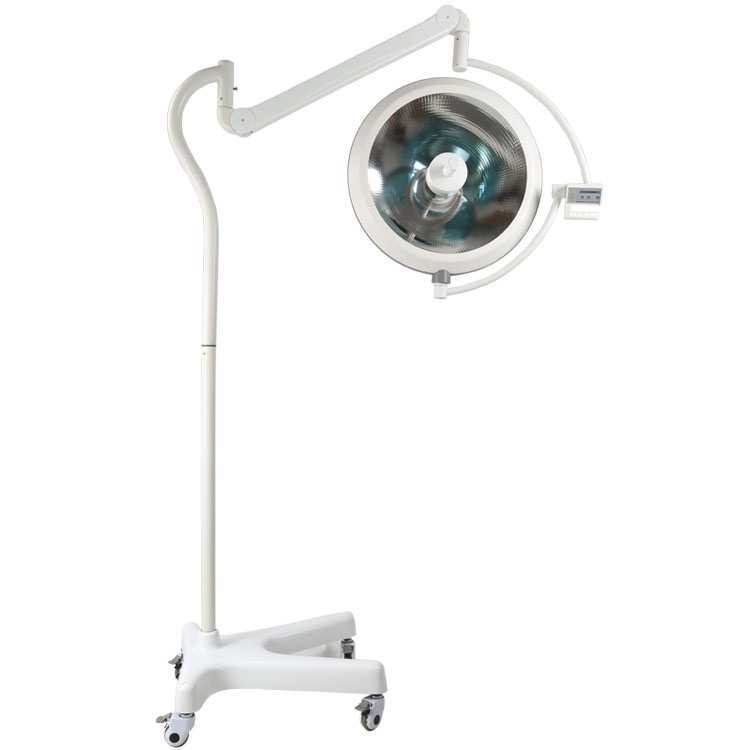
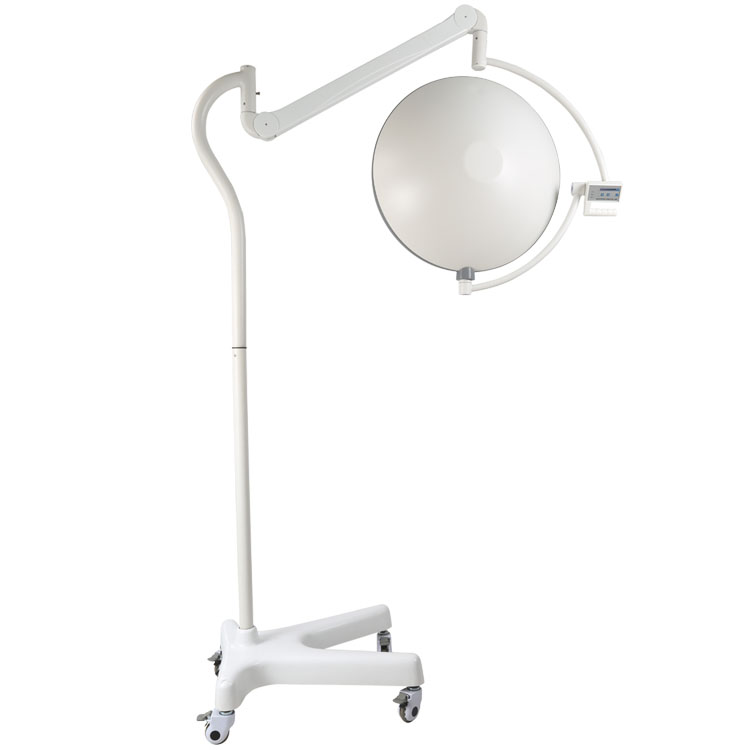
Types of the lamp domes have 500mm diameter dome and 700mm diameter dome for Choice
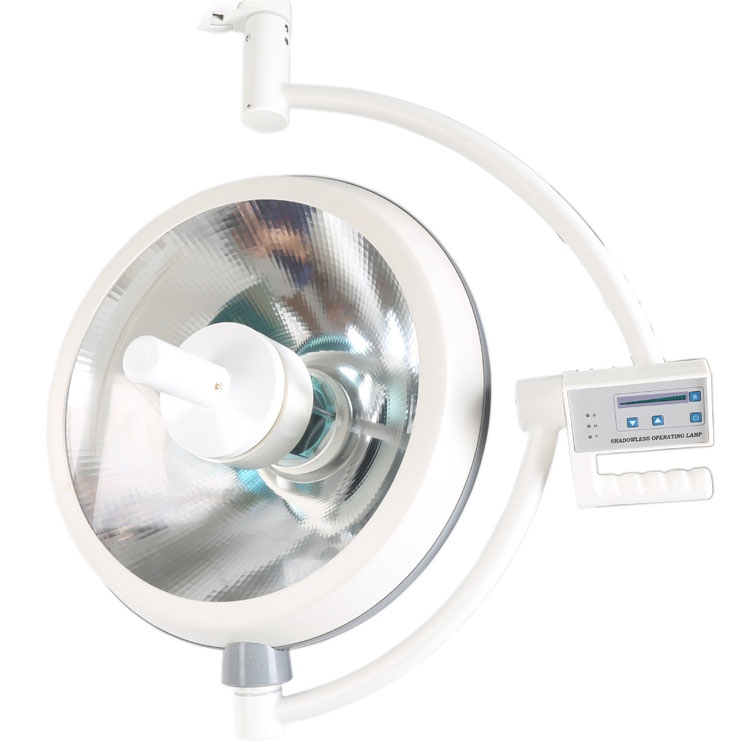

Certificates:
Crtificates of CE, ISO9001, ISO13485, CFDA are approved.

Our company
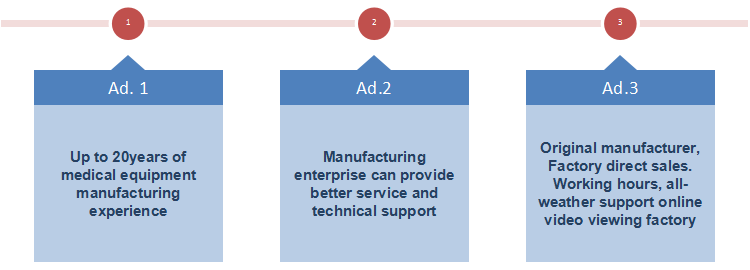
Shangdong province is the main machinery production base in China.
KANGERJIAN Medical Technology Co., Ltd. is a group of senior lighting design expert and machinery manufacturing expert company with 20years experience and factory locating in the east city--the hometown of confucius--Qufu in Shandong province, China.
The Company has passed the ISO:9001:2008 quality system certification, ISO13485:2003 quality system certification, CE certification and CFDA certification, so that the enterprise management standards and product quality is relatively connected to expand the international market for enterprises to lay the foundation.
Our main products: Operation Theatre Lights , Operating Room Lights , Double Dome Halogen Operating Light, Single Dome Halogen Operating Light, LED Operating Light , Surgical Operating LED Light , Mobile Type Operating Light, Gynecology Examination Tables , Obstetric Delivery Bed , Electrical Gynecological Table , Obstetric Delivery Table , Delivery Examination Table , Electric Hydraulic Operating Table, Electric Medical Operating Table , Manual Electric Operating Table , Surgical Table , Operating Table , Operating Theatre Pendants , icu tower crane in ICU room, LED Viewbox etc. professional medical equipment.
The quality of casting by me, the market led by me! Excellent from professional, KANGERJIAN people lead the new trend of medical equipment.
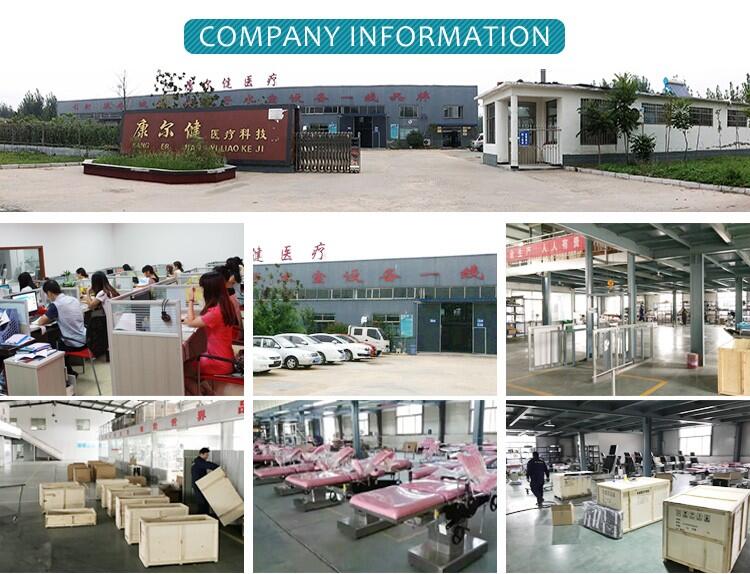
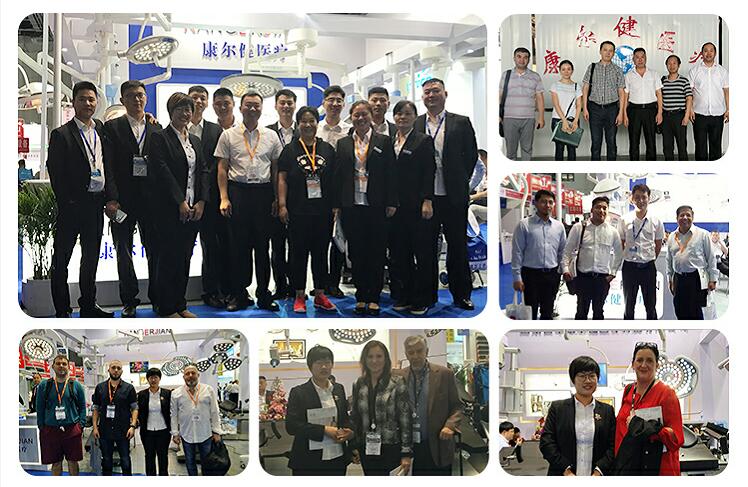

Mobile Type Halogen Operating Light
Mobile Type Halogen Operating Light,Mobile Operating Lamp,Halogen Operation Lamp,Halogen Clinics Operation Lighting
Shandong qufu healthyou Medical Technology co.,Ltd , https://www.kangerjian-medical.com
